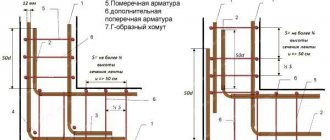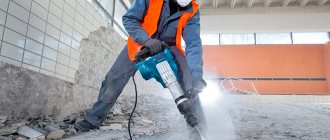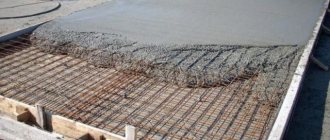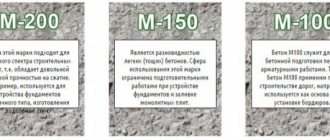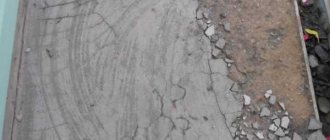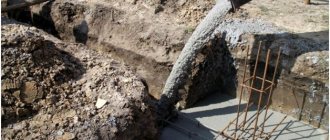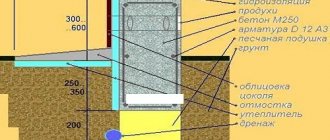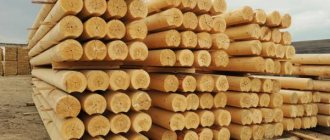Home |Reinforcement |Is it possible to weld reinforcement for the foundation?
Date: January 13, 2019
Comments: 3
When starting the construction of a house, we hope that it will be a reliable protection for the family hearth. In order for expectations to be met, you need to make an effort in your work, competently approach the solution of many issues, one of which is whether it is possible to weld reinforcement for the foundation.
There is still no consensus on what is better – welding or knitting a frame for the foundation. If for high-rise buildings, the foundation of which carries enormous loads, welded reinforcement is the only correct solution, then when constructing one-story buildings, expert opinions differ. Let's figure out what advantages and disadvantages are inherent in welding and knitting.
Strengthening the foundation - what is it for?
A well-designed and high-quality foundation is a guarantee of the durability of the structure. A strong, indestructible base will prevent shrinkage, which causes cracks and subsequent destruction of the structure. Therefore, strengthening the foundation is a serious issue that cannot be treated superficially. Increasing the strength of the foundation is achieved by reinforcing the structure with metal mesh or rods of a certain diameter.
Should the reinforcement for the foundation be welded or knitted - this is the main question that many people think about
For low-rise buildings, a strip foundation is most often installed. You can save money and fill the foundation with regular concrete without additional reinforcement. Most likely, after some time, cracks and deformations will appear in the foundation. To prevent undesirable consequences, carry out reinforcement work with a steel frame that:
- Increases strength.
- Evenly distributes the load.
- Compensates for soil reactions during freezing.
- Will increase the service life of the structure.
Reinforcement in concrete will protect the foundation from cracking and destruction.
Methods for connecting reinforcing elements
There are various methods to increase the strength characteristics of the foundation. Private developers use any available material (waste metal, broken glass, etc.). For country houses this is an acceptable option. But to build a reliable house, even a one-story one, use proven technologies for strengthening with metal mesh or rods. If your choice is a mesh, then you only need to cut it correctly and install it properly in the prepared trenches. The use of metal elements implies the creation of a single structure from them, the so-called frame.
It is worth knitting reinforcement in cases where you need to get a good foundation on difficult soil
There are two ways to achieve this:
- tie using flexible wire for connection;
- apply welding to fix the structural elements.
Both options have strengths and weaknesses. Let's conduct a comparative analysis of each of them.
Reinforcement knitting technology
There are several ways to knit foundation reinforcement with special wire. This work is carried out directly on site. You can use the services of specialized workshops where the work will be completed efficiently and within the agreed time frame. There is a small downside to this service. You will have to find transport to transport large structures. In small settlements this is difficult and expensive. Therefore, we advise you to independently master the process of knitting frame elements:
- Decide on the number of connection points.
- Cut the appropriate number of pieces of steel wire 20 cm long. The diameter corresponds to 1.2-1.4 mm.
- Fold the cut piece in half.
- Bring the resulting loop to the junction of the elements.
- Use a crochet hook. You can make it yourself or purchase it in a store. Insert the working part into the loop.
- Grab the loose ends and pull them through the hole. The junction of the rods must be covered with wire.
- Tighten with maximum force and, by turning the hook several times, ensure a tight connection of the frame structure parts.
The reinforcement is knitted using a special wire that connects the rods at the corners of the structure
Knitting using a crochet hook is one of the cheapest, but most labor-intensive methods of connecting reinforcing elements. No expensive construction tools are used here; the work is carried out by one or two workers. If you want to speed up and make your work easier, you can purchase:
- automatic tying gun. With its help, the connection speed will increase significantly, but handling it requires certain skills;
- a rotary power tool, such as a drill or screwdriver with a special attachment, which can be purchased in specialized stores.
The advantages of automated devices include increased productivity, the ability to connect structural elements in hard-to-reach places of the frame, and a significant reduction in physical costs.
Organization of work
When starting work on creating a reinforced frame using the knitting method, purchase the necessary tools and materials in advance. By following simple recommendations, you will quickly master the connection technique and be able to perform the assigned tasks efficiently:
- Place the bottom row of horizontal structural elements at a short distance from the ground surface - 4/6 cm. Wooden or plastic pads are suitable to ensure the required gap. Their task is to prevent the frame from coming into contact with the soil.
- Install vertical elements at a fixed distance from each other. Keep your step even. Ensure that the bars remain stationary using locking devices. Protect metal from contact with the ground using non-metallic cup holders. It is important to comply with this requirement to avoid corrosion of the reinforcement in the future.
The knitting process itself is different in that it can be done either directly at the site of construction of the building or in a special workshop
- Proceed to fixing the frame elements. Pay special attention to the reliability of connections. They must withstand the stage of pouring concrete mixture without moving.
- When constructing a reinforcing frame in several tiers, maintain equal distances between horizontal and vertical elements. Provide additional fastening to the corners of the structure - they tend to move during pouring. Make sure that the corner parts of the reinforcement are bent inward and do not protrude beyond the base.
- Observe the requirements laid down in the technical specifications for the selection of grades and assortments of materials.
- Carry out simple strength tests on the frame after completion of the work. Place a board on the top tier of the structure and walk along it - the frame should remain motionless under the influence of human weight.
- Immediately before pouring concrete, additionally fix the entire structure to prevent vertical deviations.
Welding reinforcement
In modern construction, this technique is used quite rarely, which is due to significant disadvantages of the technology for welding steel rods. But, in private construction and when constructing objects that will not be subject to high loads, this is a completely acceptable and convenient option .
The technology has the following advantages:
- Speed of construction of a reinforcing frame.
- Ease of connection when using large diameter rods.
- Good rigidity of the connection of the reinforcing rods.
But this method also has important disadvantages:
- Not suitable for joining thin rods due to the high risk of burning through the material.
- Changes in the physical properties of steel.
- Possibility of welding falling off when pouring concrete.
- Internal stresses arise at the connection points.
- The need to use special rods that are suitable for welding.
Rebar welding technology
Although welding reinforcement for the foundation is more labor-intensive than knitting, it is impossible to completely abandon it. On large construction sites, when constructing multi-story buildings, it is impossible to do without welding. The foundations of such structures bear increased loads, and therefore the strength requirements are appropriate. To weld reinforcement for the foundation, use special brands of products - A400C or A500C. The diameter of the rods is within 3-5 centimeters. Resistance spot welding is used for the work. Considering the fact that when the metal overheats, changes in the structure occur, causing a weakening of the strength characteristics, it is desirable that the welding of reinforcement for the foundation takes place at specialized enterprises or is carried out on construction sites by qualified welders.
When welding, the strength of the reinforcement is reduced and the internal structure is damaged
The production of welded frames in industrial conditions is carried out in several stages:
- The technical control department checks the quality of materials that are planned to be used in the manufacture of the frame. Material that does not meet the requirements of standards and specifications is rejected;
- Round rolled steel made of St. 0 or St. 3, previously cleaned of rust and dirt, is straightened, marked, and cut to a given size. The elements are cleaned with an abrasive tool;
- the workpieces are connected into a flat structure. Spot welding of reinforcement is carried out with a workpiece diameter of up to 26 millimeters. When working with reinforcement of increased diameter, deformations of the structure occur due to strong heating during welding. To avoid distortion, the elements are lightly grabbed;
- Using special conductors, flat elements are installed vertically above each other at a calculated distance. Conductors are manufactured with a high degree of accuracy - deviations from the specified parameters do not exceed three millimeters;
- a preliminary bunch of elements is made;
- The compliance of the spatial design with the technical design is checked, the entire assembly as a whole is corrected, and the required length of welding seams is determined. To avoid deformation of elements from overheating, the sequence of welding joints is clearly defined;
- The spatial structure is finally welded.
Most often this method is used in places where the soil has a stable position, that is, it does not settle too much
When welding directly on a construction site, the procedure is similar. The only difference is the inconvenience of using arc welding. Therefore, when assembling a frame module on site, spot welding of reinforcement is used. It is mobile, and when equipped with special pliers, you can perform work even in a suspended state, with rotation to any angle.
Which method of fastening the reinforcement should I choose?
Professional builders recommend using only knitting . Construction regulations also indicate the use of a binding method. But welding technology can also be used in certain cases. It is necessary to proceed from the load on the structure, installation location and type of reinforcement.
Welding can be used to fix reinforcement made from steel 3 (non-alloyed, low carbon). Overheating causes minimal harm to such material. This is class 1 fittings. But, in this case, the metal is burned through, which leads to a decrease in the diameter of the rods. Therefore, this method is only suitable for fairly thick rods. The qualifications of the welder are also important, since if welded incorrectly, the fittings can become completely unusable.
It is highly not recommended to weld class 2 and 3 reinforcement. Only welding at corner points to make it easier to make a knitted frame. Consequently, welding is permissible only in those places where there is a minimum tensile force. Products of these classes can only be tied with wire.
In the manufacture of reinforced concrete products for multi-storey construction, only knitting technology is used, since in such objects concrete structures are subject to significant loads. Welding is also not suitable for building foundations in swampy areas. In such soil, the foundation will gradually shrink. If the reinforcement is connected rigidly (by welding), cracks form at the fastening points. The binding technique allows for mobility of the connection and, accordingly, higher tensile, bending and twisting strength.
Which connection method do you prefer?
Before you finally decide whether to knit or weld a reinforcement frame, weigh the pros and cons. Each connection method has positive and negative aspects. Recommendations from specialists will help you choose the optimal solution. When constructing multi-storey buildings with an increased load on the foundation, welding is clearly chosen. The diameter of the steel bar is selected to be at least 30 millimeters. Why should reinforcement with a larger cross-section be preferred? Answer: to minimize the risk of burnout, which will weaken the strength of the connection.
The disadvantages of the welding method, which limits the scope of application, include the occurrence of internal stresses, which increase the likelihood of cracking during casting. It is problematic to use in seismically unstable areas and on complex soils, where the shrinkage process takes a long time and can cause destruction.
But we must not forget about the advantages of welding:
Speed of work, allowing to significantly reduce construction time.
- Increased rigidity of the finished module.
- Obtaining a solid foundation that can withstand heavy loads.
For private buildings, it is better to use the knitting method, which:
- it is simple and accessible, even for those starting a construction career;
- eliminates the need to search for a welding machine and a high-class welder capable of performing work without defects;
- does not create additional stress at the joints;
- allows the use of cheaper reinforcement of reduced cross-section for reinforcement.
The disadvantages include slight rigidity, which is not particularly important when constructing low-rise buildings.
Boil or knit: which method to choose?
Careful consideration must be given before making a final decision about whether to use ties to fasten steel bars or fasten them by welding. Why do some builders weld reinforcement while others knit it? Each method has its own advantages and weaknesses.
To avoid mistakes, you should listen to the advice of professionals:
- For massive multi-story buildings that place a significant load on the foundation, it is advisable to use welding. At the same time, it is important not to burn out the reinforcement, so as not to weaken the strength of the connection;
- for small residential buildings and country houses, you can use the connection of parts of the reinforcing lattice using knitting wire. This method of fixation ensures the strength of such buildings.
When using welding, it is important to eliminate the possibility of burnout, which weakens the strength of the joints. It is undesirable to use the welding connection method in seismically active zones, as well as on problematic soils, where the integrity of the foundation may be compromised as a result of soil displacement.
When planning the construction of a residential building, every developer dreams that it will be stable and reliably protected from adversity. To do this, you should take a serious approach to achieving your goal, make efforts, and solve many problems. Sometimes the question arises whether the reinforcement for the foundation can be welded. There is a debate going on among builders and private developers. Some confidently claim that it is better to weld frame elements rather than knit. Others doubt whether it is possible to weld foundation reinforcement. Let's try to understand this issue.

